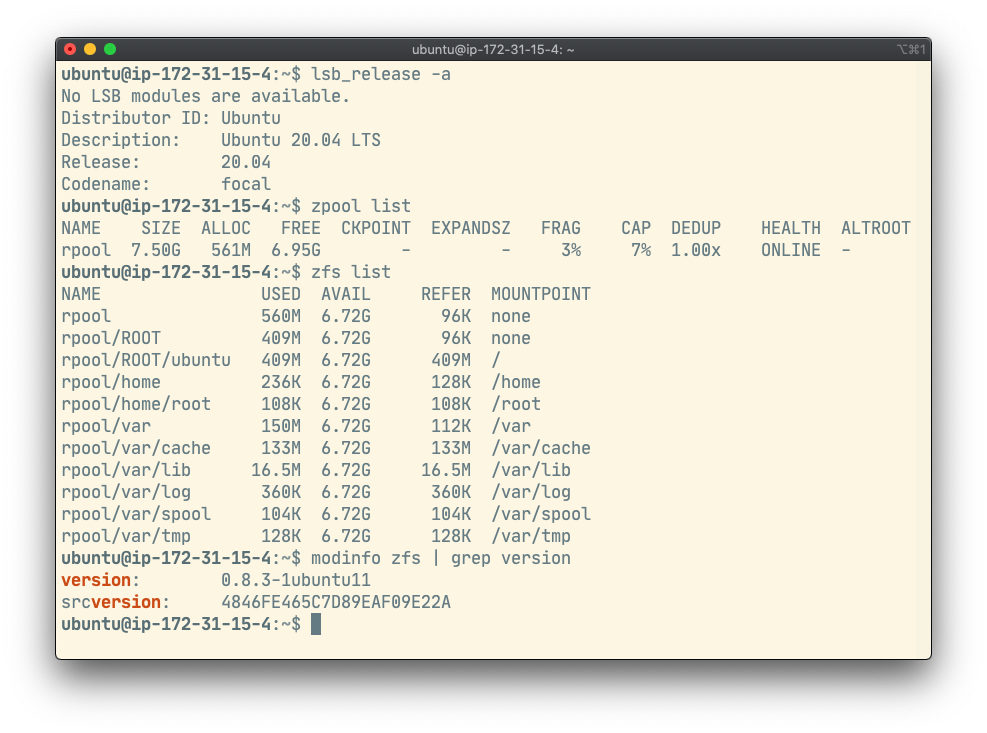For several years now, I’ve been running all my AWS instances with a recent long-term support edition of Ubuntu server,
ZFS as the root file system. Ubuntu 20.04 LTS was released today, so I’ve updated my Packer templates -
the original inspiration for the amazon-ebssurrogate builder - to support it!

Ubuntu 20.04 has some nice new features, including:
- ZFS on Linux version 0.8.3,
- Linux Kernel version 5.4, including
io_uringand built-in support for WireGuard, - Up-to-date compiler and runtime packages for a variety of platforms.
Since I last updated these templates, HashiCorp have also added a feature to Packer to allow templates to be authored in HashiCorp Configuration Language v2 instead of JSON.
[Read More]